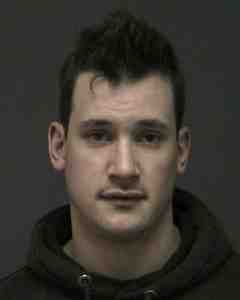White Plains Council Airs FASNY Concerns During Special Session
The White Plains Common Council held a Special Meeting Monday afternoon to discuss and air publicly their concerns about the final documents regarding the partial closure of a public roadway – Hathaway Lane – as it relates to the French American School of New York (FASNY) Special Permit and Site Plan application to operate a regional school in the Gedney Farms neighborhood of White Plains at the site of the former Ridgeway Country Club.
After several years of discussion, debate and development changes, the resolutions are almost ready for a final vote. Council members agreed it was time to move forward, either yay or nay, but that on this last occasion would put forward their final requests for clarifications.
Council president John Martin spoke first saying that his comments were of a technical nature only and that he wanted to get the legislation into a format that could be voted on. Regarding the partial closure of Hathaway Lane that would restrict emergency vehicle access, Martin expressed concern about placement of the emergency access road and said he remained unconvinced by the layout, which did not address his earlier suggestion to move the road further north.
Martin also asked why it would take four years for the access driveway off of North Street to be built. “I can understand a longer time period for the site plan, but why so long on this?” he asked.
Martin further asked how the valuation of the section of Hathaway Lane that would be discontinued would be determined and again said he believed the road should be open to the public for a portion of every day – from 6 p.m. to 6 a.m. for example. “I feel it is only a few degrees safer to close Hathaway than it would be to let it remain open,” he concluded. “It does not feel compelling to close the road. I would have liked to see alternatives built into the site plan,” Martin added.
Councilman John Kirkpatrick commented that in his experience you usually know how a vote on a development will go. On this one you don’t, he said.
Kirkpatrick said in this case the neighborhood was right because initially the project was too big. With all the changes made by the developer to accommodate neighborhood concerns, “perhaps we should call this a victory,” he said. “We don’t have a lot of choice. Change is going to happen. Our job is to make sure it is the right kind of change. We have to do what is right for all the people of the whole city.”
“The applicant has fulfilled its obligations and the city has fulfilled its obligations,” Kirkpatrick continued. “It is possible that the city could lose any resulting litigation if the resolutions are not passed, and the city could lose all the benefits it gained during the negotiating process.”
Kirkpatrick said he felt both the resolution to discontinue part of Hathaway Lane and the FASNY site plan were complete and that he would vote yes on both resolutions.
Councilman Dennis Krolian said he would keep his own counsel and reserved his judgment until the vote.
Councilwoman Milagros Lecuona said she had many comments to make because she does not feel the applicant has addressed all the questions put to it. “Nothing I have put on the table has been answered,” she said.
Lecuona specifically called out traffic problems and new state requirements regarding sewage ad storm water management that had not been included in the plans. Regarding Hathaway Lane, Lecuona said: “The applicant must have a plan in place to pay for this project. It is a mystery to me that the applicant has agreed to buy a portion of a street when it doesn’t even know the price. What is the price?”
“I would also like to know how costs of construction would impact the development over time and the impact that would have on the neighborhood,” Lecuona added. She also noted concerns about the impact of traffic on the neighborhood while the North Street entrance is being built. “Many impacts on the neighborhood have not been addressed. I still would like to see the architectural renderings showing the design and placement of the buildings in relation to the existing neighborhood,” she said.
Councilwoman Nadine Hunt-Robinson repeated her concerns about public health, safety and welfare. Referring to the Cornell University case where an educational use can be rebutted if it has a negative impact on a community, Hunt-Robinson said she was concerned that everyone has been trying to fit a round peg into a square hole. “While one problem is fixed another is created,” she said.
Hunt-Robinson said she did not feel that the negative environmental impacts had sufficiently been mitigated by changes made to the site plan and that she looked forward to the up or down vote.
Councilwoman Beth Smayda said she had made her comments throughout the process and had nothing further to add at this time.
Mayor Tom Roach expressed his concern about the two-phase process, especially as it relates to traffic volume and control on the site. “There is an overall traffic count of 530 (permitted), Roach said. If during Phase 1 the count reaches 500, then Phase 2 does not work.”

